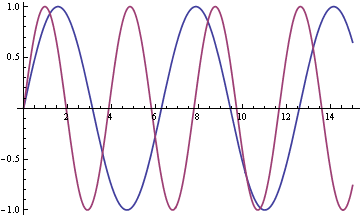Most people have heard of the golden ratio, but have you ever heard of the silver ratio? I only heard of it this week. The golden ratio can be expressed by a continued fraction in which all coefficients equal 1.
The silver ratio is the analogous continued fraction with all coefficients equal to 2.
You might think for a moment that the silver ratio should be just twice the golden ratio, but the coefficients contribute to the series in a non-linear way. The silver ratio actually equals 1 + √2. The golden ratio has a simple geometric interpretation. I don’t know of a geometric interpretation of the silver ratio. (Update: See Maxwell’s Demon for geometric applications of the silver ratio.)
A previous post mentioned that the golden ratio and related numbers are the worst case for Hurwitz’s theorem. The silver ratio and its cousins are the second worst case for the theorem.

